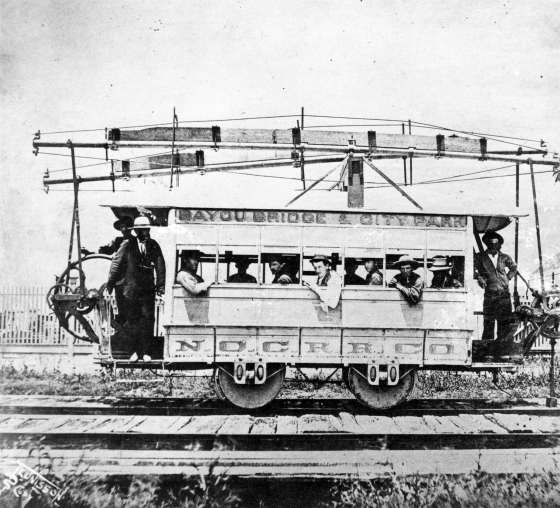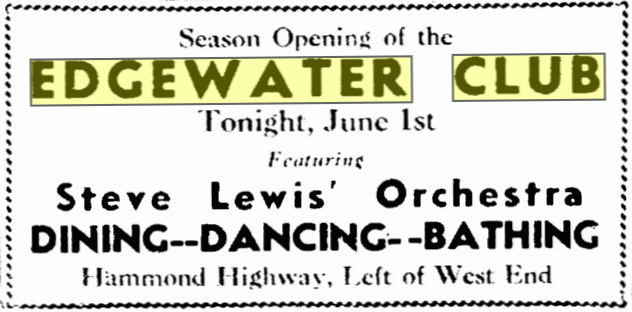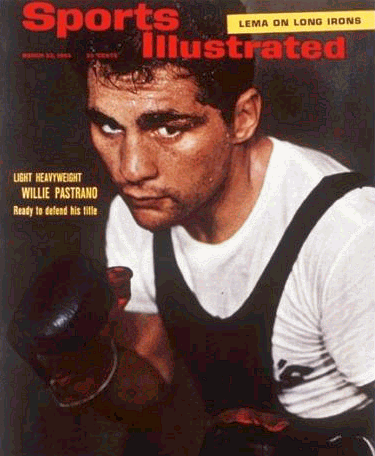|
Today in New Orleans History |
|
|
June 1



 

To receive an update for each day in New Orleans
history, join our facebook page
- Today in New Orleans History
Tweet
Born 1873, George Vital "Papa Jack" Laine was a pioneering band leader
in New Orleans in the years from the Spanish-American War to World War I.
He is often credited with being instrumental in the development of jazz music as his Reliance Brass Band was the first to
fuse European, African and Latin music together. The earliest jazz musicians can be traced back to playing within the Reliance
Brass Band or being influenced from those who had. Many of the New Orleans musicians who first spread jazz around the
United States in the 1910s and 1920s got their start in Laines band, including the members of the Original Dixieland Jass
Band. Laine was a drummer, but was more noted for his skills at arranging and booking bands. Laine's musicians included
individuals from most of New Orleans' many ethnic groups such as African American, English, French, German, Italian, Jewish,
Latin American, Scottish, and more. Laine started leading bands in 1885 before the Jim Crow codes
went into effect in New Orleans. Due to the diverse background of
many of his bands members such as their cultural background, socioeconomic status, age variations from young to old as well
as musical experience (some having none at all) a broad range of ideas were developed and fused together leading to the
early beginnings of jazz music. Even after segregation laws started demanding "whites"
and "colored" be kept separate, Laine continued to hire light- and medium light-skinned African-American
musicians, claiming that they were "Cuban" or "Mexican" if any segregationist tried to start trouble.
As such his band attracted a large and diverse group of people such as Mexican clarinetist Lorenzo Tio Sr who was a pioneer
of the jazz solo. Laine believed music brought people together. He retired from the music booking business by 1920, but he
was interviewed a number of times, providing first hand accounts of the early days of the development of New
Orleans jazz. He had hired well over 100 musicians to play in his bands. "Papa Jack" died on June
1, 1966. (WIKI)
New Orleans Union Station was a railroad station in New Orleans, Louisiana. It was
designed by Louis H. Sullivan for the Illinois Central Railroad and opened on June
1, 1892. It fronted on South Rampart Street, riverwards from the current New Orleans Union Passenger Terminal. The
station was used primarily by the Illinois Central Railroad, as the terminus for its main line from Chicago, but, over time,
it also served a number of other lines, including the Southern Pacific Railroad and the Yazoo
and Mississippi Valley Railroad. By the 1940s, a total of 13 passenger trains arrived and departed from the station daily. New Orleans Union Station was the only train station architect Louis Sullivan designed. It was constructed
in the architect's well-known 'Chicago School' style and decorated with his iconic ornament. Adler and Sullivan's head draftsman
Frank Lloyd Wright was involved in the final work under Sullivan's supervision. Union Station was a
three story hip-roofed structure with a cupola, including office and waiting areas, with a broad portico with central columns
and arched entryways at each end of the entrance. New Orleans at the time of the station's construction
had several separate railway stations including the Texas Pacific Railroad-Missouri Pacific
Railroad Station on Annunciation St. between Melpomene and Thalia Streets; The Louisiana and Arkansas-Kansas
City Southern Railroad Station at 705 S. Rampart Street; the Southern Railway Terminal at 1125 Canal Street and the
Louisville and Nashville Railroad Station, on Canal St. near the Mississippi River. Union Station and
the other stations were demolished in 1954 and replaced by the current New Orleans Union Passenger Terminal which were constructed
to consolidate the Crescent City's inter-city railroad services. From http://en.wikipedia.org/wiki/New_Orleans_Union_Station
Willie
Pastrano died n New Orleans on December 9, 1997 at the age of 62. |
|
|

To receive an update for each day in New Orleans history,
join our facebook page - Today in New
Orleans History.
Analytics |




